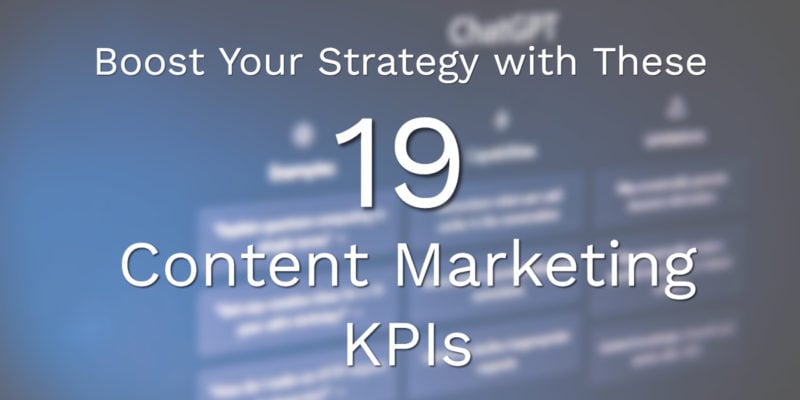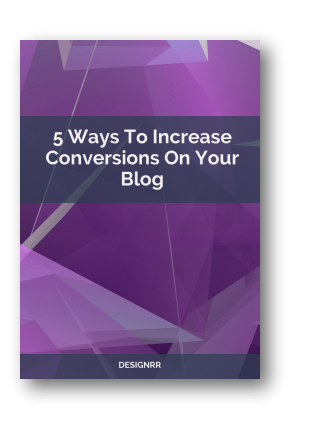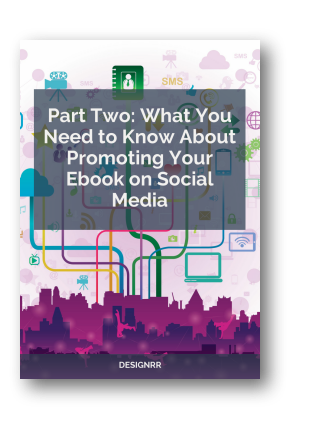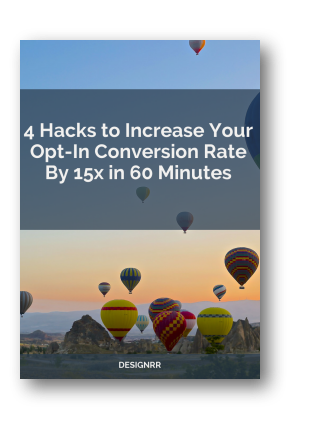Content is king in digital marketing, but how do you know if your content wears the crown or just plays dress-up? That’s where Key Performance Indicators (KPIs) come in. As someone who’s been in the content marketing trenches for years, I can tell you they’re not just fancy terms to throw around in meetings.
Think of KPIs as your content strategy’s personal trainer. They’re not here to make you feel bad about that extra slice of cake (or in our case, that underperforming blog post). Instead, they guide you toward your goals, showing what works and what needs more effort.
When you started in content marketing, you had tons of data but few insights. Maybe you feel the same way now. You’re creating content left and right, but are you making progress? Are you talking to your audience or just shouting into the void? These questions keep us content marketers up at night, and we’ll tackle them in this guide.
We’ll look at the KPIs that matter. Not the vanity metrics that look good on paper but don’t affect your bottom line. We’re talking about metrics that will help you:
- Figure out if your content clicks with your target audience
- See how well you’re moving prospects through the buyer’s journey
- Measure how your content impacts your business results
Whether you’re a seasoned pro looking to sharpen your approach or just starting and feeling overwhelmed, this guide is your compass. We’ll explore each KPI in detail, discuss why it’s important, and show how you can use it to create content that not only reaches your audience but also drives real, measurable results.
By the end of this guide, you’ll see your content strategy in a new light, armed with the know-how to take your efforts to the next level.

What Are Content Marketing KPIs?
Content marketing KPIs are more than just fancy acronyms to wow your boss or clients. They’re the vital signs of your content strategy, telling you if your efforts are thriving or need some TLC.
KPIs are like your content’s report card, but one that actually helps you improve instead of just giving you a grade. They show the story behind your numbers, revealing where your content shines and where it might need some work.
Let’s say you’ve put your heart into a series of how-to videos. Your view count is through the roof, and you’re feeling pretty good. But then you look at your conversion rate, and it’s flat. This is where KPIs come in handy. They connect the dots between your content and your business goals, showing if you’re not just entertaining your audience, but actually moving them toward a purchase decision.
Why KPIs Matter in Content Marketing
In content marketing, flying blind isn’t an option. KPIs are your navigation system, helping you find your way through the sea of content possibilities. Here’s why they’re crucial.
- Goal Alignment: KPIs make sure your content efforts line up with your overall business objectives. They bridge the gap between creating cool content and driving actual business results.
- Resource Allocation: By showing what works and what doesn’t, KPIs help you use your resources more effectively. No more guessing games with your content.
- Constant Improvement: KPIs give you feedback, letting you fine-tune your content strategy over time. They’re the secret sauce to getting better results with each piece of content you create.
- Stakeholder Communication: When it’s time to justify your content marketing budget or show off your team’s success, KPIs give you solid data to back up your efforts.
How to Choose the Right KPIs for Your Strategy

Here’s where many content marketers go wrong: they try to track every metric under the sun. But not all KPIs are equal, and what works for one business might not work for another. The key is to pick KPIs that fit your specific goals and stage in the marketing funnel.
Here’s a quick look at how different KPIs match up with various content marketing objectives:
| Objective | Relevant KPIs |
|---|---|
| Brand Awareness | Organic Traffic, Social Shares, Mentions |
| Engagement | Time on Page, Bounce Rate, Comments |
| Lead Generation | Conversion Rate, Cost Per Lead, Form Submissions |
| Customer Retention | Repeat Visitor Rate, Customer Lifetime Value |
The goal isn’t to have the most KPIs, but to have the most relevant ones. Choose wisely, and you’ll have a powerful toolkit to drive your content strategy forward.
Brand Awareness KPIs
When it comes to brand awareness, you’re not just shouting into the void – you’re trying to build real connections with your audience. Let’s look at the KPIs that show the impact of your content:
Organic Traffic
Organic traffic is the backbone of sustainable content marketing. It shows that your content answers questions people are actually asking, and search engines see you as a valuable resource.
Why it’s important:
- It signals sustainable growth
- It shows your content’s relevance and quality
- It often leads to better-quality leads compared to paid traffic
How to use it:
- Dig into your search console data to see which queries bring in traffic
- Look for patterns in your top-performing content and create more like it
- Focus on attracting the right audience that matches your ideal customer profile
Pro tip: Use tools like SEMrush or Ahrefs to find “low-hanging fruit” – keywords where you’re just off the first page. A bit of tweaking could bring in a lot more traffic.

Social Shares and Engagement
In the social media age, your content’s value isn’t just about who sees it, but who thinks it’s worth sharing with their network.
Key things to track:
- Shares
- Likes
- Comments
- Mentions
Why it’s important:
High engagement rates show that your content strikes a chord with your audience. It’s social proof that can expand your reach exponentially.
How to increase engagement:
- Create content that sparks emotion or offers significant value
- Use eye-catching visuals – infographics, videos, and interactive content tend to get more shares
- Ask questions or start discussions in your content
Keep in mind: Don’t just chase big numbers. A post with fewer likes but more thoughtful comments might do more to build your brand’s authority.
Backlinks
Backlinks are like votes of confidence from other websites. They tell both search engines and potential readers that your content is trustworthy and authoritative.
Why they’re crucial:
- They boost search engine rankings
- They bring in referral traffic
- They build your brand’s credibility
Ways to earn quality backlinks:
- Create link-worthy assets (in-depth guides, original research, unique insights)
- Reach out to industry influencers and publications
- Write guest posts for reputable sites in your niche
Pro tip: Don’t just count links – look at their quality. A few links from respected industry sites can be worth more than many from low-quality sources.

Engagement KPIs
Engagement is where the rubber meets the road in content marketing. Getting eyes on your content is one thing; keeping people interested and involved is another ball game. Let’s break down the key engagement KPIs and how to make them work for you:
Time on Page
This metric shows if your content is relevant and valuable. A high time on page suggests your audience finds what they need and sticks around to consume it.
How to boost Time on Page:
- Use heat mapping tools to see where readers spend the most time and where they drop off
- Try different content structures (e.g., breaking long-form content into clear sections with jump links)
- Add interactive elements like calculators, quizzes, or clickable infographics
Bounce Rate
A high bounce rate can raise red flags, but context is key. For a blog post, a high bounce rate might not be as worrying as for a product page.
Ways to fix high bounce rates:
- Make sure your meta descriptions accurately describe your content
- Speed up your page load time (even a 1-second delay can significantly affect bounce rates)
- Use internal links strategically to guide visitors to related content
Click-Through Rate (CTR)
CTR is like a digital handshake – it’s your audience agreeing to take the next step with you.
Tips to improve your CTR:
- Run A/B tests on your CTAs constantly
- Create a sense of urgency or exclusivity in your CTAs
- Make sure your CTAs fit the content they’re in
Here’s a quick reference for engagement KPI benchmarks:
| Metric | Not Great | Average | Excellent |
|---|---|---|---|
| Time on Page | < 30 seconds | 30-60 seconds | > 2 minutes |
| Bounce Rate | > 70% | 40-60% | < 40% |
| CTR | < 1% | 1-3% | > 3% |
Keep in mind, these are general benchmarks and can vary by industry and content type. The key is to set your own baseline and work to improve it over time.
Lead Generation and Conversion KPIs

At the end of the day, your content needs to drive business results. Here’s how to measure if your content is turning readers into leads and customers:
Conversion Rate
This is the percentage of visitors who take a desired action (e.g., signing up for a newsletter, downloading a whitepaper, or making a purchase).
Why it’s important:
Conversion rate is the ultimate measure of how well your content drives business outcomes.
How to make it better:
- Put a clear and compelling value proposition in your CTAs
- Use urgency and scarcity tactics (ethically) to encourage action
- Optimize your landing pages for conversions with clear messaging and minimal distractions
Cost Per Lead (CPL)
CPL helps you understand how efficiently your content marketing spend turns into leads and informs budget decisions.
How to figure it out:
CPL = Total Marketing Spend / Number of Leads Generated
Ways to lower CPL:
- Focus on creating evergreen content that keeps generating leads over time
- Reuse high-performing content across multiple channels
- Use retargeting to re-engage visitors who showed interest but didn’t convert right away
Lead Quality
Not all leads are created equal. High-quality leads are more likely to become valuable long-term customers.
How to measure lead quality:
- Look at how much they engage with your content
- See how well they fit your ideal customer profile
- Check their readiness to buy
Ways to improve lead quality:
- Create detailed buyer personas
- Make targeted content for each stage of the buyer’s journey
- Set up lead scoring models
Content Attribution
Understanding which content contributes most to conversions helps you focus on creating more high-impact content.
Attribution models to think about:
- First-touch attribution
- Last-touch attribution
- Multi-touch attribution
Pro tip: Don’t just look at last-touch attribution. Consider using a weighted attribution model that gives credit to all touchpoints in the customer journey. Read more about lead magnet metrics you need to be tracking.

Customer Retention KPIs
While getting new customers often takes the spotlight, keeping your existing ones happy and loyal is just as important for long-term success. Let’s look at the key retention KPIs:
Repeat Customer Rate
This metric shows how loyal your customers are. A high repeat customer rate means your content isn’t just bringing in customers, but keeping them coming back for more.
How to calculate it:
Repeat Customer Rate = (Number of Repeat Customers / Total Number of Customers) x 100
Ways to improve:
- Create a content calendar that covers different stages of the customer lifecycle
- Make exclusive content for existing customers
- Use personalization to suggest relevant content based on past purchases or interactions
Net Promoter Score (NPS)
NPS goes beyond just satisfaction to measure how likely customers are to recommend you. It’s a strong indicator of how likely your customers are to spread the word about your brand.
How to figure out NPS:
- Ask customers: “On a scale of 0-10, how likely are you to recommend our product/service to a friend or colleague?”
- Group responses:
- Promoters (score 9-10)
- Passives (score 7-8)
- Detractors (score 0-6)
- Calculate NPS: % of Promoters – % of Detractors
How to boost your NPS:
- Follow up with respondents to find out why they gave their rating
- Create content that addresses common issues identified by detractors
- Share success stories and case studies from your promoters
Customer Lifetime Value (CLV)
CLV helps you understand the long-term value of your content in building customer relationships.
Basic CLV calculation:
CLV = (Average Purchase Value x Average Purchase Frequency) x Average Customer Lifespan
Ways to increase CLV:
- Create a content progression that guides customers to higher-value products or services over time
- Make educational content that helps customers get more value from your offerings
- Use content to cross-sell and upsell by showing complementary products or advanced features
Keep in mind, retention-focused content isn’t just about selling. It’s about consistently providing value and strengthening the bond between your brand and your customers.
Tracking KPIs Across Platforms

In today’s multi-channel world, keeping track of KPIs across various platforms can be tricky. But with the right approach, you can turn this challenge into an opportunity for deeper insights.
Analytics Tools
While Google Analytics, Ahrefs, and SEMrush are great starting points, don’t overlook platform-specific tools. Here’s a quick rundown of some essential tools:
- Google Analytics: Your go-to for website performance metrics
- SEMrush/Ahrefs: Great for SEO and competitor analysis
- Social media native analytics (e.g., Facebook Insights, LinkedIn Analytics)
- Email marketing platforms (e.g., Mailchimp, Constant Contact)
- CRM systems (e.g., Salesforce, HubSpot) for lead and customer data
Pro tip:
Look for tools with API integrations. This lets you pull data from multiple sources into a single dashboard, giving you a more complete view of your content performance.
Check out our article on the top content marketing tools you should be using.
Data Visualization
Turning raw data into actionable insights is where things get interesting. Tools like Looker Studio, Tableau, or PowerBI can help you create comprehensive dashboards that tell the story of your content’s performance.
Best practices for data visualization:
- Create different views for different stakeholders (e.g., high-level overview for C-suite, detailed metrics for content team)
- Use color coding and visual hierarchies to highlight the most important KPIs at a glance
- Include trend lines and comparisons to benchmarks to give context for your metrics
Cross-Platform Analysis
To get a true picture of your content’s performance, you need to look at how it does across all channels. Here’s a framework for cross-platform analysis
- Identify touchpoints: Map out all the places where your audience interacts with your content (website, social media, email, etc.)
- Set common metrics: Define KPIs that you can measure across platforms (e.g., engagement rate, conversion rate)
- Use UTM parameters: Track how individual content pieces perform across different channels
- Set up cross-platform attribution: Use tools that let you see the full customer journey across multiple touchpoints
Remember, the goal isn’t just to collect data from different platforms, but to weave it into a coherent story about your content’s performance and impact.
Regular KPI Reviews

KPI reviews shouldn’t be a monthly chore you dread. They’re a chance to gain insights and adjust your strategy. Here’s how to get the most out of your reviews:
Monthly KPI Check-Ins
These quick check-ins are your pulse checks, helping you stay on top of your content performance and make quick adjustments.
What to focus on in monthly reviews:
- Trend analysis: Look for sudden changes or unusual patterns that might need quick attention
- Leading indicators: Focus on metrics that can help you predict future performance
- Short-term goals: Check progress towards monthly or quarterly objectives
What to do:
- Make small improvements to your content strategy
- Tweak ongoing campaigns based on performance data
- Find quick wins and easy fixes for immediate improvement
Quarterly Deep Dives
These more thorough reviews let you step back and look at the bigger picture of your content marketing efforts.
Key parts of quarterly reviews:
- Performance summary: Overview of key metrics and how they stack up against goals
- Content audit: Evaluate how different types of content and topics are doing
- Channel analysis: See which distribution channels work best
- Audience insights: Look at engagement patterns and audience demographics
- Competitive analysis: Compare your performance to industry benchmarks and competitors
Strategic things to think about:
- See how your content performance lines up with broader business goals
- Spot seasonal trends that can shape your content calendar for the coming year
- Check the overall health of your content ecosystem – are there gaps in your funnel?
Annual Strategy Review
This is your chance to take a high-level look at your content marketing strategy and set the course for the year ahead.
Things to include:
- Year-over-year performance analysis
- Review of big wins and lessons learned
- Look at resource allocation and ROI
- Set new annual goals and KPI targets
- Spot emerging trends and technologies to use
Refining Strategy Based on Data
The real value of KPI reviews is in the actions you take based on your insights. Here’s how to turn your data into strategic decisions:
- Tell a story with your data: Don’t just report numbers; weave a narrative about what your KPIs reveal about your audience and their journey.
- Find patterns and connections: Look for relationships between different metrics. For example, does an increase in social shares link to higher conversion rates?
- Question your assumptions: Use your data to challenge long-held beliefs about your content strategy. Are there ideas that need a fresh look?
- Prioritize actions: Based on your insights, create a to-do list. Start with high-impact, low-effort improvements.
- Test and refine: Make changes based on your insights, but always plan to measure the impact. A/B testing can be really helpful here.
- Work with other teams: Share your insights across departments. Your content performance data can inform product development, customer service, and even sales strategies.
Remember, the point of these reviews isn’t to make a report that collects dust. It’s to create a flexible, data-driven content strategy that grows with your audience’s needs and your business goals.
New Content Marketing Metrics for 2025

As how people consume content changes, so do our metrics. Here are some new KPIs to watch:
Video Completion Rate
With video content becoming more popular, understanding not just views but completions is key.
Why it matters:
- Shows how engaging your video content is
- Helps find the best video length for your audience
- Can guide where to put key messages in your videos
How to make it better:
- Break down this metric by video length to find your audience’s sweet spot for video content
- Look at where people stop watching to see where you might be losing their interest
- Try different video formats (e.g., short vs. long) and analyze completion rates
User-Generated Content (UGC) Engagement
UGC is becoming a powerful tool for building trust. Measuring its impact is crucial for modern content strategies.
Key things to track:
- How much UGC is created
- Engagement rate on UGC vs. brand-created content
- Conversion rate from UGC touchpoints
Ways to boost UGC:
- Start hashtag campaigns that encourage users to participate
- Show off UGC on your website and social channels
- Give incentives for customers to share their experiences
Share of Voice in Search
This metric helps you understand how visible your brand is in search results compared to your competitors.
How to measure:
- Pick your core keywords and topics
- Track your rankings for these terms over time
- Compare your visibility to that of your main competitors
Tools to use:
- SEMrush’s Market Explorer tool
- Ahrefs’ Content Gap analysis
- BrightEdge’s Share of Voice reporting
Content Efficiency Ratio
This new metric measures the output of your content efforts against the resources you put in.
How to calculate:
Content Efficiency Ratio = Content Performance (e.g., leads generated) / Resources Invested (e.g., time, money)
Why it’s important:
- Helps justify content marketing budgets
- Shows which types of content give you the best return on investment
- Guides decisions on where to put your resources
Attention Metrics
Going beyond pageviews to understand how deeply users engage with your content.
Metrics to look at:
- Scroll depth
- Active time on page
- Interaction events (e.g., clicks, highlights)
Tools for measuring attention:
- Chartbeat for real-time attention analytics
- Heap for event-based user behavior tracking
Dark Social Sharing
Tracking how your content is shared through private channels like messaging apps.
Why it matters:
- Can account for a big part of content sharing that often goes unmeasured
- Gives insights into more personal, word-of-mouth style recommendations
Ways to track:
- Use URL shorteners with tracking capabilities
- Add click-to-share buttons for messaging apps
- Encourage use of branded hashtags even in private shares
Wrapping Up
As we’ve seen throughout this guide, content marketing KPIs are more than just numbers on a screen. They’re the compass that guides your strategy, the feedback loop that drives improvement, and the proof that shows your content’s value to the business.
Successful content marketers will be those who can:
- Link KPIs to business goals: Make sure every metric you track ties back to a core business objective.
- Stay flexible: As new platforms pop up and how people consume content changes, be ready to adopt new metrics that capture these shifts.
- Focus on quality over quantity: It’s not about having the most KPIs, but about having the right ones that give you actionable insights.
- Use AI and machine learning: Take advantage of advanced analytics tools to uncover deeper insights and predict future trends.
- Put the audience first: Remember that behind every number is a real person. Choose KPIs that help you understand and serve your audience better.
- Balance short-term and long-term metrics: While it’s important to track immediate performance, don’t lose sight of metrics that show long-term brand health and customer loyalty.
As you put these KPIs and strategies into action, remember that content marketing is as much an art as it is a science. Use these metrics as a guide, but don’t let them stifle your creativity or your ability to connect with your audience on a human level. After all, great content marketing is about storytelling, and the best stories are those that touch people emotionally, not just statistically.
Here’s to creating content that not only looks good by the numbers but also leaves a lasting impact on your audience. Happy measuring, and even happier creating!




